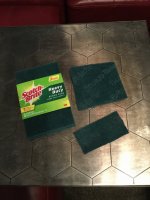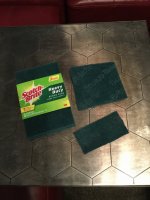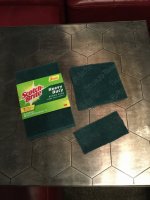-
Tired of adverts on RWI? - Subscribe by clicking HERE and PMing Trailboss for instructions and they will magically go away!
You are using an out of date browser. It may not display this or other websites correctly.
You should upgrade or use an alternative browser.
You should upgrade or use an alternative browser.
Scotch Brite Pads are my BEST friend
- Thread starter Dallasdude77
- Start date
thumbsarehandy
I'm Pretty Popular
- 26/4/17
- 1,274
- 2,639
- 113
Sorry, same as a you would a sb.
cut a section, fix it to a block of wood, and use a fixed edge to slide it against - constistent and straight. One direction.
Appreciate it
- 3/5/16
- 488
- 1,327
- 93
I may have to order one of these. Thanks for the tip!Hi guys i strongly suggest to leave the scotch-brite in the kitchen and try a bergeon 5444-A block for rolexes, it's easier to go straight with a block and it's closer to the rolex brush!!
thumbsarehandy
I'm Pretty Popular
- 26/4/17
- 1,274
- 2,639
- 113
These are the ones I used...I just cut them into smaller pieces so they're easier to controlView attachment 40079
Many thanks for taking the time
It seems there are now 3 options to rebrush a Rolex bracelet:
- green Scotch Brite (good)
- '000' steel wool (better)
- finest Bergeon 5444-A block (best)
thumbsarehandy
I'm Pretty Popular
- 26/4/17
- 1,274
- 2,639
- 113
Just read @tripdog brilliant advice here:
https://forum.replica-watch.info/threads/watch-mod-repair-scratches-what-do.376060/#post-3420559
Jumped the gun a bit - next page:
And here more words of wisdom:
https://forum.replica-watch.info/threads/watch-mod-repair-scratches-what-do.376060/#post-3420559
Do not use scotch brite pads or any shit like that. Buy a sheet of 400 grade wet & dry paper, with a pair of scissors cut out a square approx 3 x 3 cm/ 1 inch sq.
Fold it in 4 - this will make it rigid. Using the straight edge of the paper to guide you, line it up perfectly with the top edge of the case so that the strokes will be parallel with the brushed finish of the case.
Apply gently pressure, and keep the strokes and the paper parallel to the case top at all times.
Jumped the gun a bit - next page:
There's nothing wrong with using scotch brite - it's great for bracelets.
But the part of the case with the scratch has sharply machined edges and a polished bevel on the lug. The fibres of the scotch brite pad, which are not compact but 'woolly', will go over the edges of the case and soften and scratch them - in the wrong direction/places - they will also pass over the polished bevel and scratch that as well.
The ideal way to remove that scratch would be to dismantle the case and run the case over wet & dry paper taped to a work surface - you can keep your movements parallel and the wet & dry has no fibres to 'wander' over the edges etc.
Sometimes 'wandering' fibres are useful - getting in between the links of a bracelet for example - you want that 'woolly' texture.
And here more words of wisdom:
A very light wipe with a Cape Cod on brushed finishes improves the shine, but it's just a quick and light wipe. . .
FinanceSammy
Renowned Member
- 19/2/17
- 842
- 15
- 18
Bro, I feel like an idiot! I swear I did not see this post! I just posted the exact same freaken post. My bad guys. @mods can delete my post if you would like.
Sent from my iPhone using RWI
Sent from my iPhone using RWI
DaHokage
Known Member
- 23/11/16
- 148
- 11
- 0
Used the green scotchbrite side of a kitchen sponge I had in the house on my scratched up Sub bracelet. Did a great job! I am sure the other methods are better but for something that I had on hand, cost me peanuts, and took literally 20 seconds of work the scotchbrite method is good enough 
-DH
-DH





